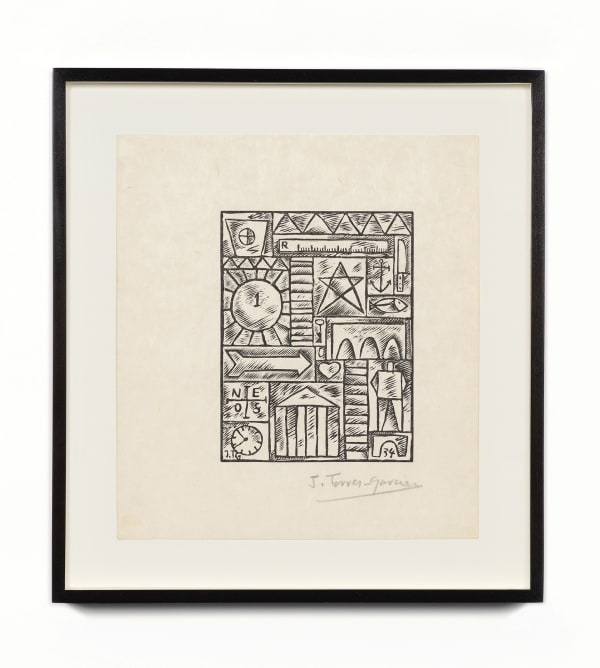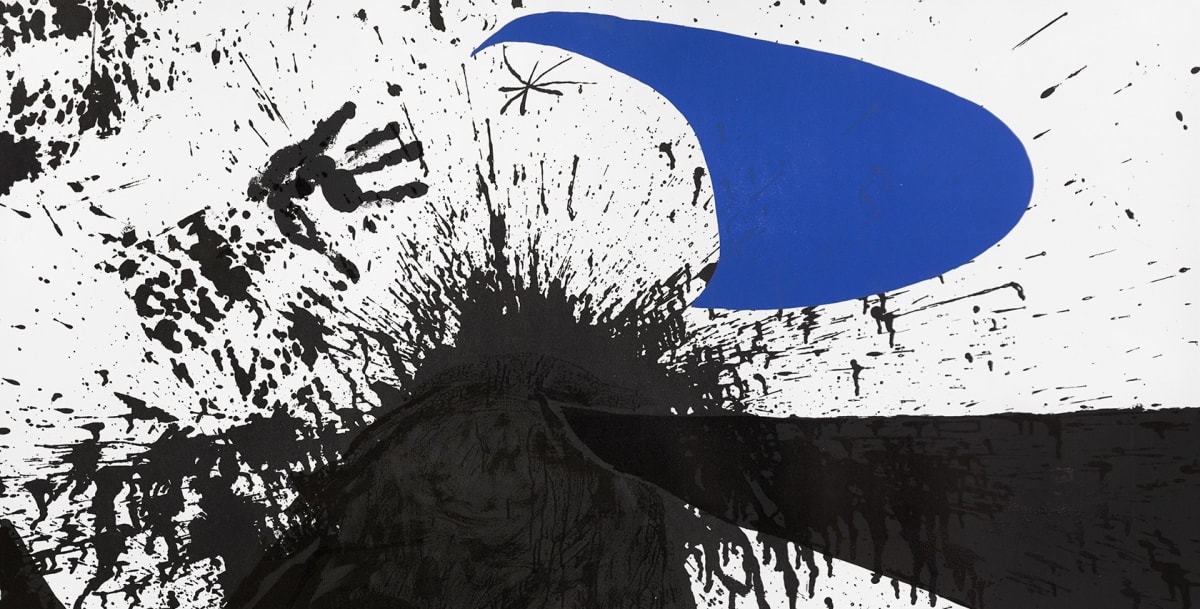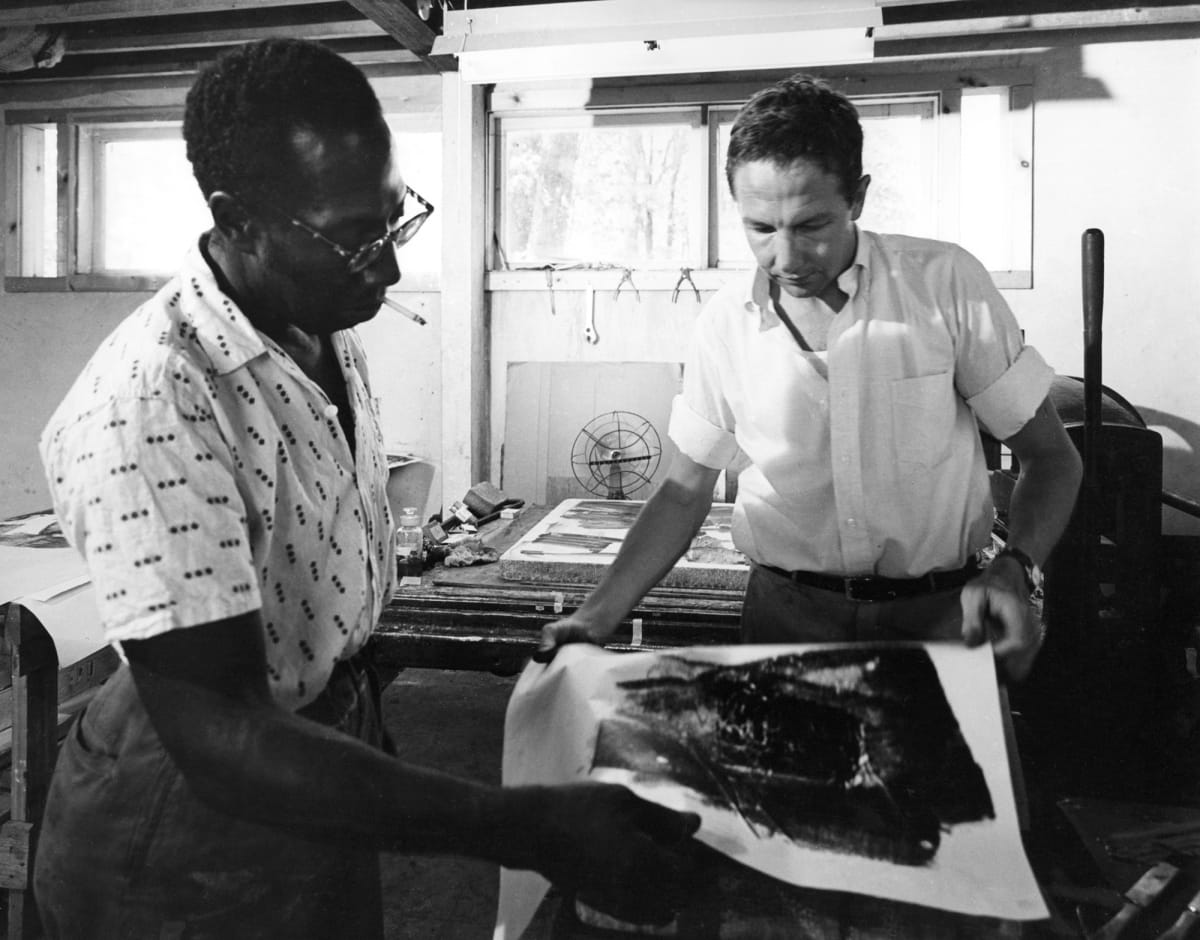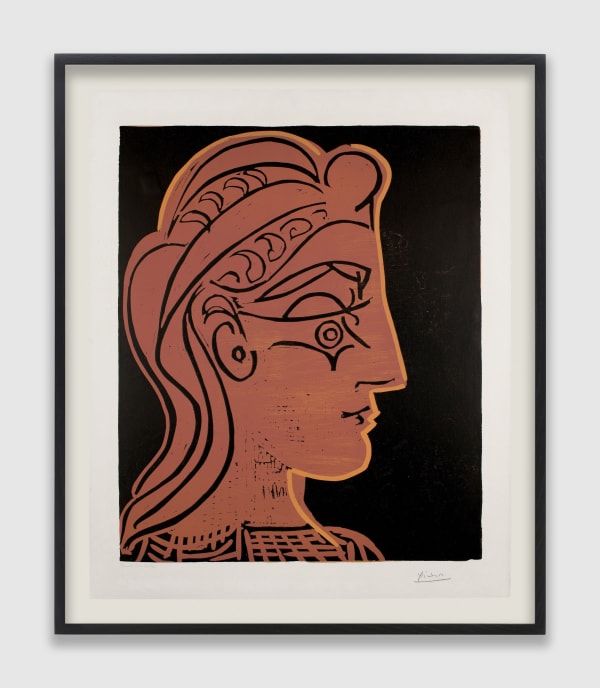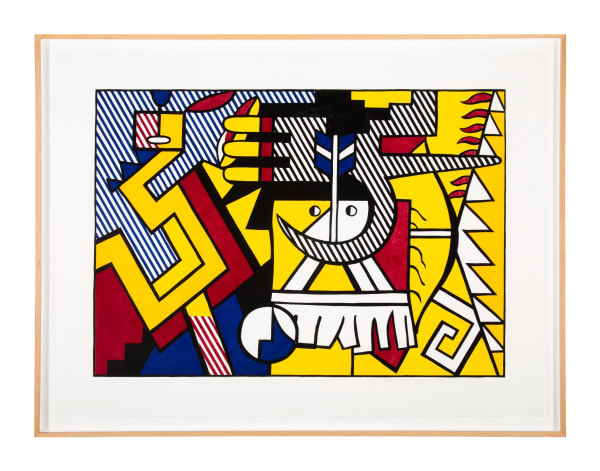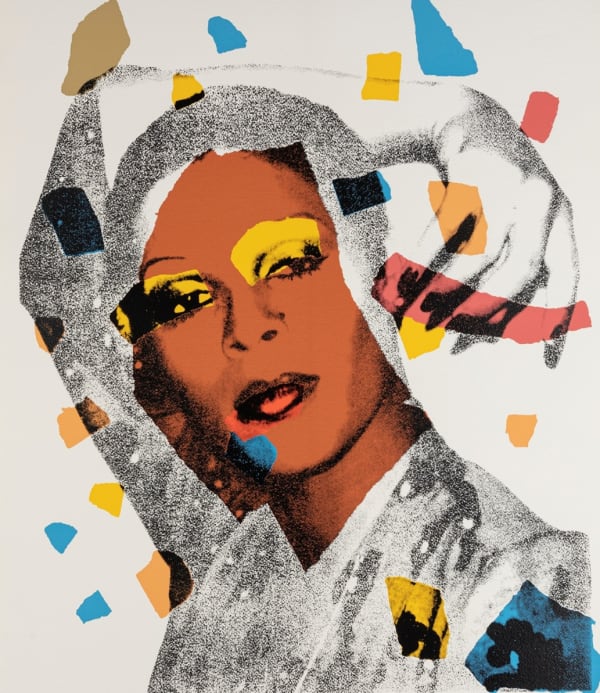“The architectural, constructive sense of my painting produces a dissociation between drawing and color that remain as two separate entities.”
Joaquín Torres-García (Montevideo, Uruguay, 1874 – Montevideo, Uruguay, 1949) is renowned as both an artist and theoretician. His family moved to Spain when he was young, and he studied with a local painter before enrolling at the School of Fine Arts in Barcelona, where he met both Pablo Picasso and Antoni Gaudí. He collaborated with Gaudí on the designs for the stained glass windows for the Palma Cathedral and the Sagrada Família. He moved to Paris in 1920 and became involved with the various avant-garde movements of the time, including Cubism, Dada, and Constructivism, ultimately developing his mature style known as Universal Constructivism. He always sought ways to combine classicism with modernity. He returned to Montevideo in 1934 and founded a journal in order to expose artists there to the new ideas in Europe. In 1942, he founded the Taller Torres-García school, which was based on the Bauhaus model. As such, he was a pivotal figure with regard to Latin American art’s development, seeking to combine abstraction with the Indigenous art of Uruguay.
-

Zeit Contemporary Art Showcases The History of Modern Prints
Annabel Keenan, Cultbytes, September 18, 2021 -

From Paris to New York: Transformations in Printmaking
Meer, September 4, 2021 -

Transformations in Printmaking Surveyed at Zeit Contemporary Art
Eli Anapur, Widewalls Magazine, August 13, 2021 -

From Paris to New York
Art Plugged, July 30, 2021 -

From Henri Matisse to Carmen Herrera, Transformations in Printmaking at Zeit Contemporary Art
Artfixdaily, July 30, 2021


